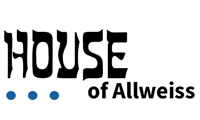When this story was first published I had several comments saying I was to hard on Unisys, that Blumenthal and Stern were just as important to what was Burroughs and Sperry surviving as the technology. The story is written from the perspective of technology and the merger of Burroughs and Sperry was a financial exercise. Nether product line benefited in any substantial way from the other as a result at that time. Looking back now, it is clear that once the Unisys mainframe was able to move to emulation and a microprocessor-based implementation the company was able to leverage a unified hardware platform. That did not take place until the 21st century, and it was not the impetus for the merger back in 1985. At the time of the merger Burroughs was the smaller company but growing faster and gaining market share, Sperry was growing more slowly and losing market share. This scenario was the hallmark of Blumenthal’s time at Bendix, take over sicker, less profitable companies and reduce staff by combining back office, R&D, manufacturing and to some extent sales operations. Unfortunately, auto parts were a little different that computers and software. Once a customer buys into a mainframe ecosystem and develops software for it, they are very resistant to changing vendors. For many years Unisys had to run parallel research and development operations for the Univac and Burroughs product lines, and they still do today.
Despite massive plant closings, layoffs, sales of profitable operations, and numerous attempts to refocus the company by 1990 the company was suffering from massive loses, at which time Blumenthal resigned. I think the financial track record speaks for itself. If anything, the core strength of the Univac and Burroughs architectures is most likely the only reason Unisys survived to this day, along with the successors to Blumenthal’s focus on services along with mainframes.
